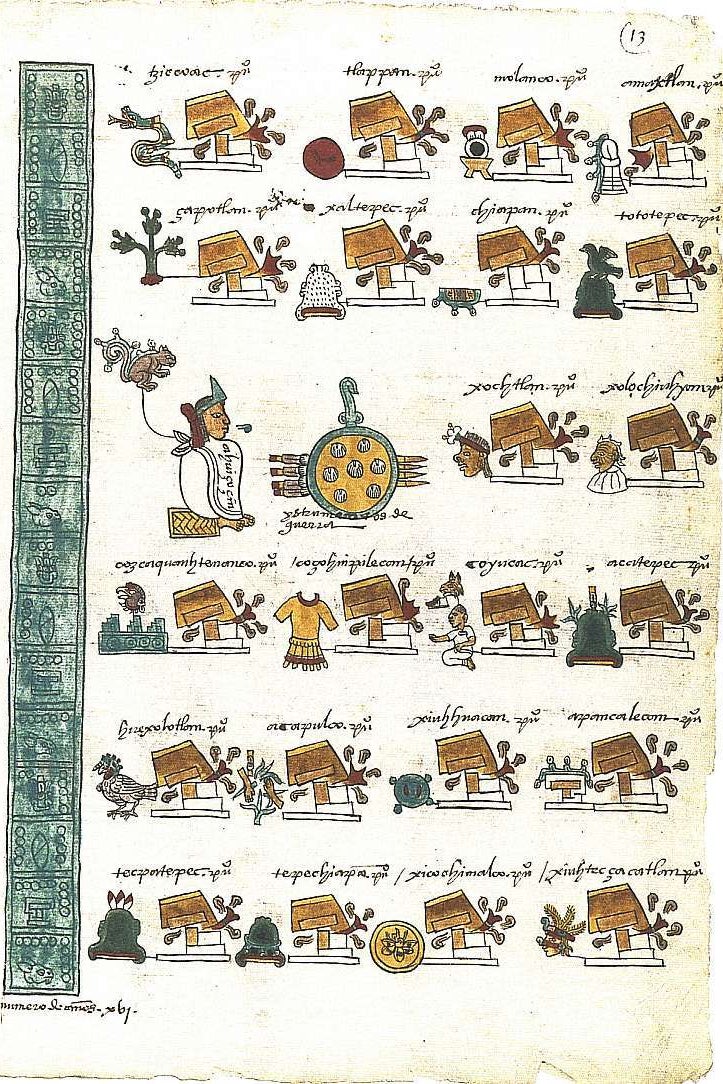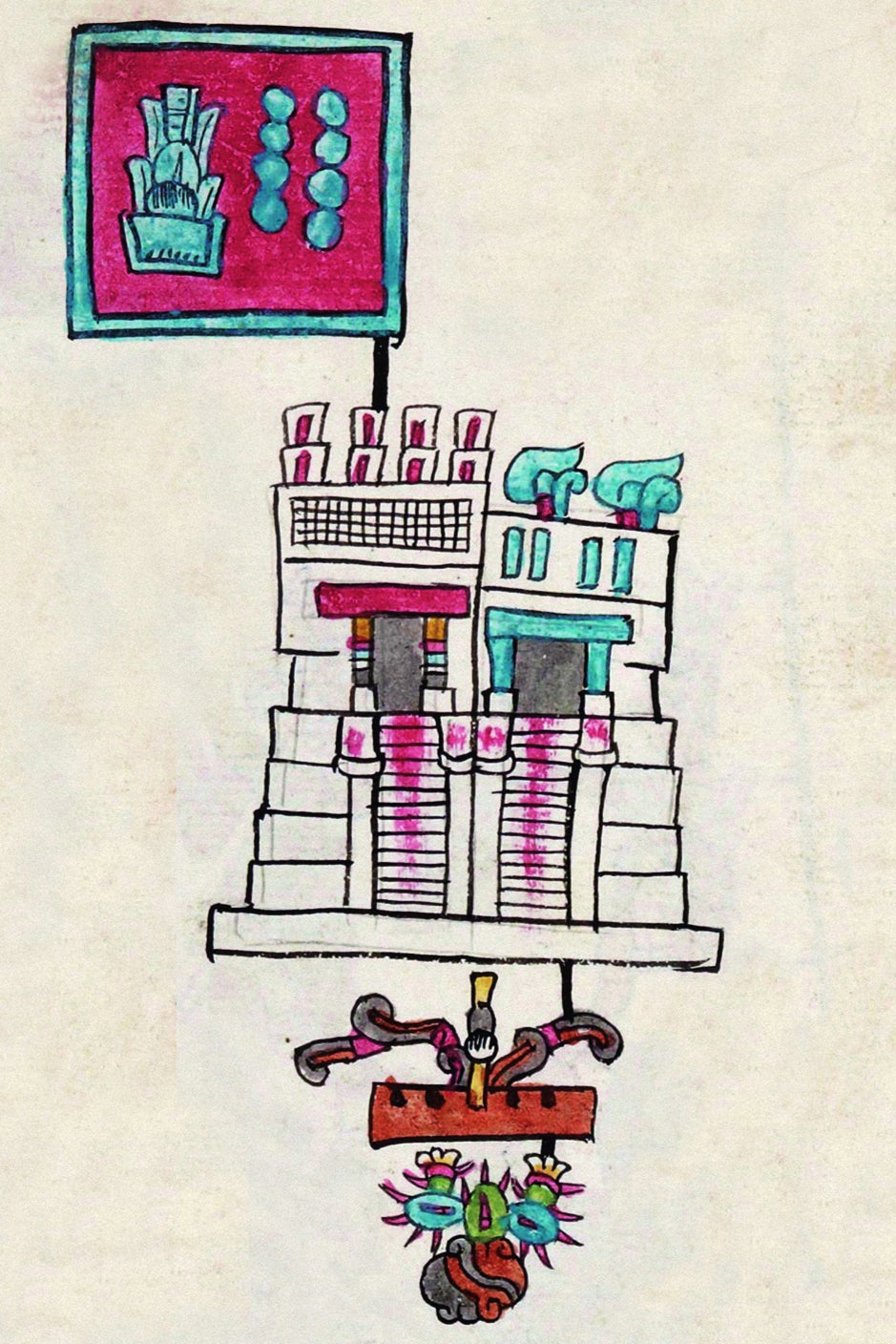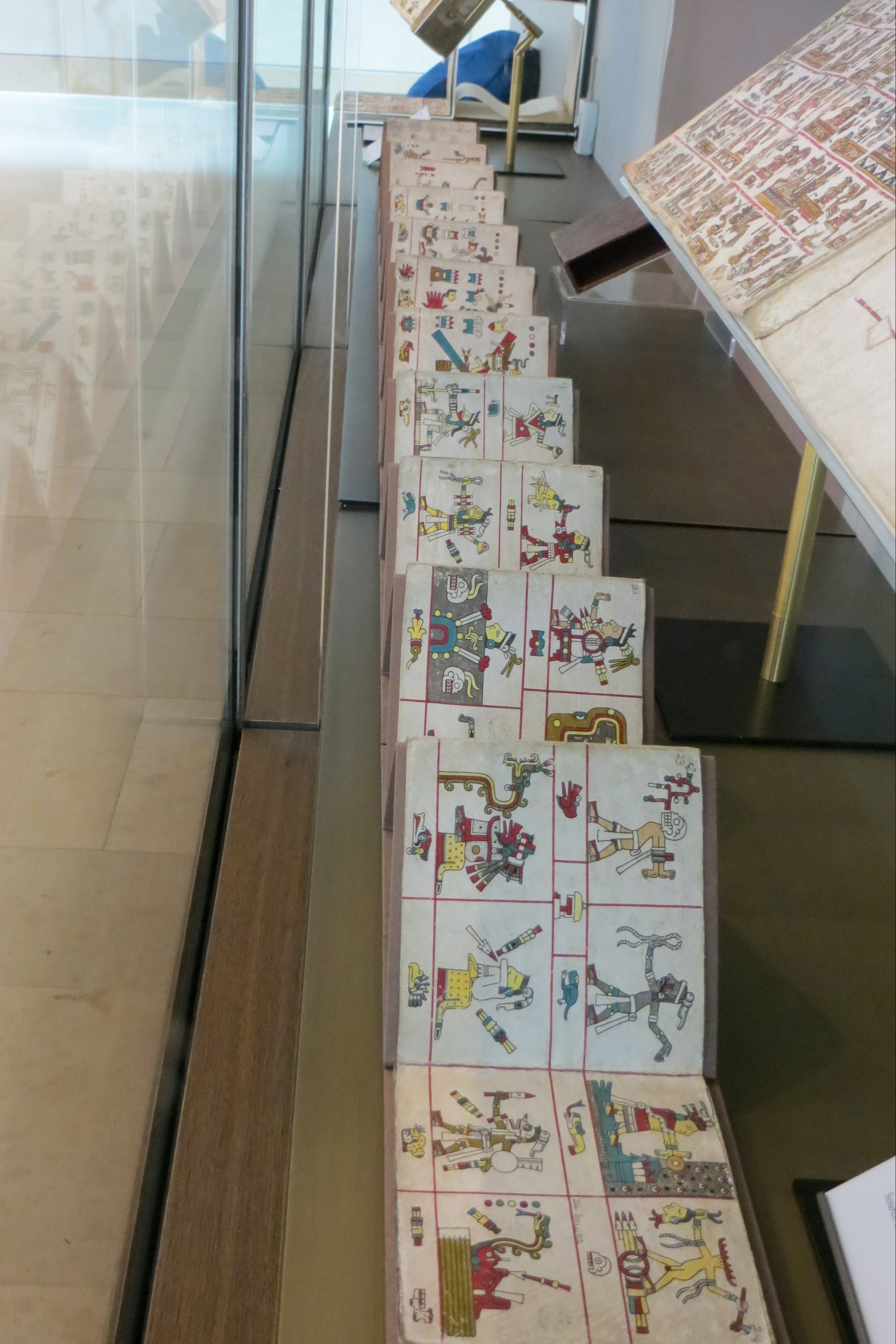
Exactly 500 years after they were destroyed by the Spanish conquistadores, the long-lost intellectual foundations of Aztec civilisation are being rediscovered by a British anthropologist.
In 1521, the Spanish military presided over the destruction of three of the world's greatest libraries – in the Aztec capital Tenochtitlan and in the Aztec-allied cities of Tetzcoco and Tlacopan.
Of the thousands of books of Aztec poetry, law, rhetoric, medicine, astronomy and history, only one or two works appear to have survived.
So comprehensive was the Spanish obliteration of the Aztec intellectual and literary achievement that much of the modern academic world became convinced that that achievement had never really existed.
Key to that perception was the belief that Aztec hieroglyphic signs did not constitute a proper writing system and that therefore a complex written literary tradition could not have existed.
Read more:
- Discovery of hundreds of human sacrifice skulls uncovers secrets of ancient Aztec city
- Tower of human skulls found by archaeologists in Mexico
But now, new research by a British linguistic anthropologist, Gordon Whittaker, is revealing for the first time that the Aztecs' hieroglyphic writing system was one of the most sophisticated scripts that humanity has ever produced.
After some 20 years of detailed research, Professor Whittaker has discovered that, like ancient Egyptian hieroglyphs, the Aztec writing system could be used not just to convey a limited number of words and syllables, but to comprehensively communicate the sounds of every syllable in the Aztec language (Nahuatl) – a flexibility which allowed tens of thousands of often multi-syllabic words to be expressed phonetically in written form.
The way in which the Aztec writing system could not only be used to represent objects or actions, but could also be used to represent every spoken sound, allowed Aztec scribes to express the entire Aztec lexicon of literally tens of thousands of words.
Professor Whittaker's research - due to be published in London next week - is therefore now beginning to demonstrate that the Aztecs' writing system was, arguably, the most advanced ever developed in the Americas.

Indeed, in terms of organisation, concept and sophistication, he has concluded that it was comparable to one of the Old World's most sophisticated scripts – Japanese.
Prior to the new research, Aztec writing had been largely marginalised and disparaged.
Over the past 32 years, the five major historical surveys of the world's writing systems have virtually ignored its existence (devoting just 3 pages to it out of a total of more than 2000). Even when it was mentioned, its status as a script was routinely dismissed.
The new discoveries about its sophistication now mean that historians will need to completely reassess the nature and scale of the downplayed wider literary, cultural and intellectual achievements of the Aztecs.
They demonstrate quite clearly that 16th century accounts, claiming that the Aztecs had sophisticated books of poetry, history, law and rhetoric – accounts mostly ignored for the past five centuries – were actually true.
Aztec literary achievements appear to have been the New World's equivalents of those of ancient Egypt, India, Greece and Rome, says Professor Whittaker.
"It's mainly their large-scale destruction that has led to them being erased from the world's memory," he said.

"But a built-in Western intellectual reluctance to assess Aztec literature on an equal footing with Old World literary achievements has also almost certainly played a role in underestimating its sophistication," said Dr Whittaker, whose research is about to be published in a new book - Deciphering Aztec Hieroglyphs.
"Sadly, many scholars over the centuries have tended to dismiss the Aztecs' hieroglyphic system because it looked to Europeans like picture-writing. In reality, it wasn't – but many art historians and linguists have mistakenly perceived it in that way," he said.
The story of the destruction of Aztec intellectual achievements is one of the most disturbing in human history.
In 1519 a small Spanish army, led by a minor nobleman called Hernán Cortés, invaded Mexico and claimed it for the Spanish Crown. He quickly formed alliances with non-Aztec indigenous elites, hostile to Aztec domination – and by 1521, the Spanish and their local allies captured and utterly destroyed the Aztec Empire's major cities including its capital Tenochtitlan (literally meaning 'By the Prickly Pear Fruit on the Rock'). All the great libraries were totally obliterated.
Mexico was then incorporated into the Spanish Empire – and Christianity was brutally enforced. Virtually all remaining Aztec books, especially religious ones, were publicly burned – and people caught hiding them were in mortal danger of being arrested for witchcraft and burned at the stake by the Inquisition.
The Aztec script had not been the only writing system in the pre-Columbian Americas – but the new research reveals, for the first time, that it was probably, in many ways, the most flexible, sophisticated and comprehensive.
It was one of a series of scripts developed by different civilisations in the Mexico region at different times.

Some indirect evidence suggests that a south-eastern Mexican people, known as the Olmecs, may have developed a rudimentary writing system by around 800 BC – but virtually no examples of any such system have survived.
The oldest proven ancient American script was invented by another Mexican people – the Zapotecs (of south central Mexico) and was in use between around 400 BC and 800 A.D.
The region's second oldest known script was that developed by the Maya civilization in Guatemala and south-east Mexico – and was used by them for almost two millennia (from around 300 BC to the late 16th century).
Another writing system – known to modern scholars as Isthmian (or Epi-Olmec) - was developed in southern Mexico in around 400 BC – and seems to have been used for around nine centuries.
Then in about 300 A.D. a great central Mexican civilisation – centred around the vast ancient city of Teotihuacan (the name means literally 'Where One Becomes a God') – created a completely new writing system. This was then used until that civilisation collapsed some three and a half centuries later.
But a descendant of that Teotihuacan script continued to be used in central Mexico and was then further developed by another central Mexican people – the Toltecs (between approximately 1000 and 1200 AD).
Finally that Teotihuacan-originating writing system was further developed and refined by the Aztecs, who dominated much of Mexico between the early 15th century and the Spanish conquest of 1519-1521.
Although only one or two pre-conquest Aztec books appear to have survived destruction, around 30 were made by scribes of Aztec descent, in the mid to late 16th century – and it is mainly those few post-conquest examples that Professor Whittaker has been studying in order to rediscover the ways in which the Aztecs' writing system really worked.
Indigenous Mexican civilisations even invented their own versions of paper – made of processed fig tree bark and also from agave leaves – in order to produce documents and books.
And, like their European counterparts, they also used processed animal skin – vellum.
The Teotihuacan, Toltec and Aztec scripts were all used to write in what is now beginning to be recognised as one of the world's most important, sophisticated and culture-rich languages – Nahuatl, still spoken today by over two million indigenous Mexicans.
What's more, the fig-bark paper used to write ancient Mexican books is still being produced today.
Known as amate, it has been used, since the Spanish conquest, by indigenous Mexicans to make often-clandestine images of indigenous deities.
But, over recent years, it has also been used as 'canvasses' for making paintings for the tourist market.
But, following Professor Whittaker's new research into Aztec script, the full story of the till-now largely unrecognised central Mexican intellectual and literary achievement is only today finally coming to light.







